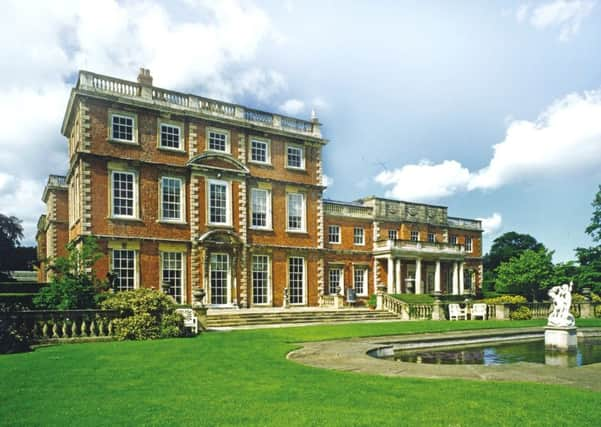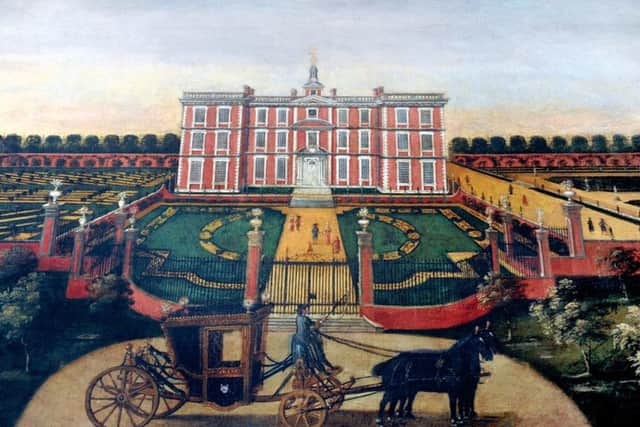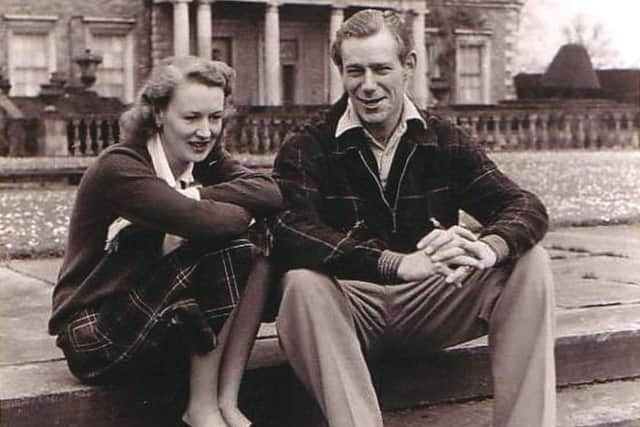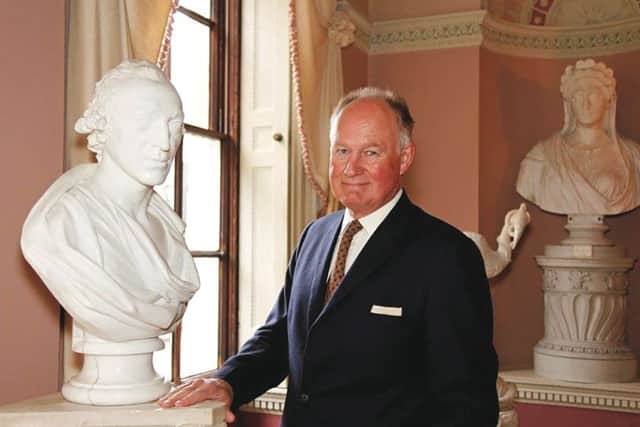Nostalgia on Tuesday: Grandest designs


A house has existed at Newby since the 1200s, when the estate owned by the ‘Nubie’ family. Sir Jordan Crosland (1618-1670, knighted 1642), who was a soldier for the King during the Civil War, later acquired the property and held positions as Constable of Scarborough Castle, as well as being MP for the town from 1661 to 1670.
After Crosland’s death his heir sold Newby to Sir Edward Blackett (1649-1718). He was the son of a Newcastle merchant – William Blackett (1621-1680) – who had earned a fortune dealing in textiles and subsequently invested in coal mining. William’s wealth lead him into politics and saw him created a Baronet in 1673.
Advertisement
Hide AdAdvertisement
Hide AdWith the death of his father, Sir Edward inherited much of the fortune and sought to further cement his position in society with the acquisition of Newby c. 1685. There was already a manor house extant on the site close to the River Ure, but this was not to Sir Edward’s taste and he engaged no less a personage than Sir Christopher Wren to design a new house. This was quite a coup, given the latter’s position as Head of the King’s Works, which at the time comprised the reconstruction of Kensington Palace, additions to Hampton Court and St Paul’s Cathedral.


Sir Edward was made MP for Ripon in 1689, after previously being Sheriff of Northumberland, but only held this position for a year as he did the seat for Northumberland in 1698. In the meantime, and after the latter appointment, he returned to local judicial matters until his death in 1718, whereupon he was laid to rest in Ripon Cathedral.
Newby Hall remained with the Blackett family until 1748 when Sir Edward Blackett, fourth Baronet, who had inherited the estate from his uncle, also Sir Edward, sold his interest to Richard Elcock, later using the surname Weddell, for nearly £10,000, having been bequeathed a large sum from a relation. The money was also able to buy his son William an education in London and at Cambridge, before studying law at Gray’s Inn. In the mid-1760s he went on a Grand Tour and amassed a large number of sculptures. Upon returning to England he had inherited Newby following his father’s death and set about providing two wings, one needed to house his new collection.
Architect John Carr was engaged to design the additions and to make changes to the interior and exterior of the main house, by moving the entrance from the west to the east front. However, Weddell turned to Robert Adam to complete the interior of the sculpture gallery and other rooms.
Advertisement
Hide AdAdvertisement
Hide AdShortly after this work was completed, architect William Belwood of York was engaged to rebuild the roof – the balustrade and cornice were installed at this time – and to add a stable block and entrance lodges.


With the house becoming a great status symbol, Weddell sought to match this personally by entering politics, returning as MP for Kingston-upon-Hull between 1766 and 1774, then Malton from 1775 to 1792. He died in the latter year without an heir and the estate was left to his cousin Thomas Philip Robinson. Thomas was only 11, but he was already the third Baron Grantham after his father’s death in 1786 and, also in 1792, became sixth Baronet Robinson of Newby.
Lord Grantham spent some time at Newby and made some changes to the layout of rooms. The Adam dining room, located at the southern end of the house, was turned into a library. Lord Grantham was an amateur architect and contributed the plans for the new dining room which was grafted on to the north face of the house c. 1810.
The daughter of Lord Grantham, Lady Mary Robinson, married Henry Vyner, from a family that had made a fortune from banking. They were given Newby after their wedding, as Lord Grantham inherited the title Earl de Grey and the Wrest estate at Silsoe, Bedfordshire. There he indulged his architectural ambitions by designing a lavish new house in the French style.
Advertisement
Hide AdAdvertisement
Hide AdLady Mary’s most prominent addition to the estate was the Church of Christ the Consoler, which was commissioned from William Burges in memory of her son Frederick who was murdered in Greece. The design took inspiration from medieval English and French churches, being completed in the mid-1870s.


Robert de Grey Vyner was the next inhabitant of Newby and his mark was left in the form of the ‘Victorian’ wing, which extends from the north- eastern side of the house, and a billiards room.
For several centuries the various owners of Newby Hall had concentrated on making their mark with the house, whereas Major Edward Compton, who inherited the estate from his mother (Robert de Grey Vyner’s daughter) in 1923, turned to the gardens and over 50 years transformed 25 acres of land surrounding the house.
The love for the garden was passed on to Robin Compton in 1977 and soon after an adventure garden was provided for younger visitors, who were perhaps more appreciative of this than the Adam interior of the house, and extended the miniature railway running parallel to the river.
Advertisement
Hide AdAdvertisement
Hide AdNewby has since passed to Richard Compton and his family, allowing another generation to enjoy and contribute to its rich history.
The Yorkshire Country House – A tour through the county’s grandest homes is available to order online at www.ypbookoffer.co.uk or call 01274 735056. £20 each. Buy two for £35. Includes UK delivery.